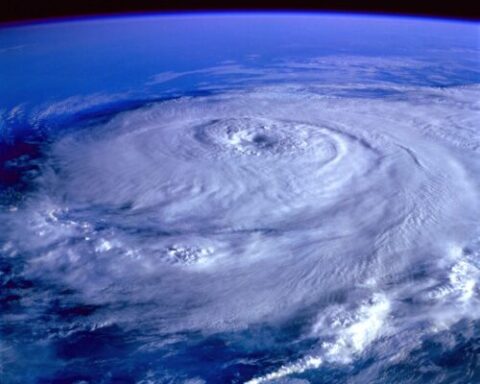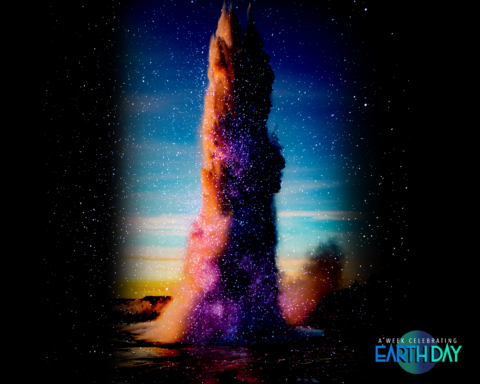My Year as a YAV ‘Down Bayou’

Just over a year ago, I sat in a room full of eager Young Adult Volunteers (YAVs), taking in a very intense week of orientation to prepare us for a year of service. We spent that time talking about what it means to spend a year in service, what it means to stretch our comfort zones, what it means to build the church. While most of my peers were talking about building the church through youth ministry, homeless ministry, tutoring, counseling, and many other means of social service and justice, I was contemplating the year ahead of me building the church by planting trees.
The YAV program places young adults in yearlong volunteer positions with a variety of non-profits and ministries around the U.S. and world. My particular placement was with the site in New Orleans, LA, working with the First Presbyterian Church of Bayou Blue as a wetlands conservationist and advocate. I had never seen a bayou, much less could I pronounce any of the French-looking names I saw on the map, but I was excited to use my background in geography and my enthusiasm for service to do this work.
In South Louisiana, the environmental situation is both dire and very complicated. Land is disappearing rapidly, adding up to an area the size of almost two football fields vanishing from the coast every hour. The National Oceanic and Atmospheric Administration (NOAA) formally removed over 30 place names from the map because they no longer exist—individual bays and bayous as well as a town or two have washed away. There is no one thing causing this alarming land loss; the many natural and human-created environmental problems tend to exacerbate other problems, establishing a daunting cycle for a YAV from New Jersey to stare down.
___________________________________________
I was contemplating the year ahead of me – building the church by planting trees.
___________________________________________
Southeastern Louisiana is part of the Mississippi Delta, some of the newest land on earth. The delta was formed by the periodic flooding of the Mississippi River over the past few thousand years. Spring floods would deposit fine sediments along the banks of the river, creating soft and fertile land. That land is still settling, a process called subsidence, or sinking of the land. Subsidence is a natural process that humans can’t halt, even with great engineering. However, levees, dams and other structures have reduced if not completely ended the annual flooding and sediment deposit, removing the source of new land in the region.

Photo Credit: Colleen Earp
More frightening, erosion is another natural process that has increased greatly in the past eight decades or so. Some coastal erosion has always occurred as water moved with tides, winds, and especially with storms. Erosion due to oil exploration and drilling, however, happens much, much faster. Coastal erosion has actually slowed down in the past few years—because all of the softest, most easily eroded spaces are already gone. These more abrupt changes to the landscape cause changes in hydrology (the water cycle), changes in wildlife habitat, changes in what food can be farmed, changes in what types of seafood can be caught, and changes in all sorts of social and economic behaviors.
Subsidence and erosion continue, and other environmental issues add up quickly as well. Newly eroded channels carry salt water to places that were formerly fresh or brackish, reducing ecosystems of great biodiversity to systems with lots of dead trees and little wildlife. Pollution in the Mississippi River watershed has created an incredible dead zone at the mouth of the river in the Gulf of Mexico, an area of extremely low oxygen where little can survive.
___________________________________________
Land is disappearing rapidly, adding up to an area the size of almost two football fields vanishing from the coast every hour.
___________________________________________
Wetlands can act like sort of speed bumps for major storms as they roll in from the gulf. However, with the disappearance of hundreds of square miles of wetlands and the increased strength and frequency of hurricanes as climate changes and destabilizes, those storm systems have a much greater effect on inland cities, as we saw with Hurricane Katrina and the eight other named storms to hit the area since.

Photo Credit: Colleen Earp
While I never quite learned that whole list of names, the people I met could rattle them all off from memory, along with the years they made landfall. Names like Gustav and Isaac wove in and out of conversations like they were terrible people who lived across town, wreaking havoc on the lives of everyone around them. Rita brought all of that salt water in. Lee inundated the area again. And, of course, Katrina, whose disastrous path through New Orleans brings coastal Louisiana back into national headlines at the end of every August.
This year’s headlines at the ninth anniversary of Katrina were a little bit different. Much of what I saw across many different news outlets concerned coastal wetlands, Louisiana’s sinking and erosion, and the environmental crisis of this critical coastline. I had already finished my term as a YAV by this time and was no longer living in South Louisiana, but, knowing I had spent a year there, friends and family members reached out to me and asked for my thoughts on this coverage. I was initially frustrated that newscasters talked about flooding and land loss like this was breaking news. The reality is, these damaging processes have been going on for decades!
___________________________________________
Coastal restoration is an incredible and beautiful process to take part in and watch. In some ways, it embodies the processes of healing and resurrection toward which our Christian faith points us.
___________________________________________
It was precisely that long-term environmental damage that called me to Louisiana. I gave wetlands tours to other volunteer groups visiting New Orleans, giving some regional context to groups still working to rebuild the area after Katrina. I visited several churches in the area, preaching about wetlands conservation and environmental justice. I met with many different organizations throughout the year, including Presbyterian Hunger Program, Presbyterians for Earth Care, Eco-Stewards, and Presbyterian Peace Fellowship, raising awareness within the denomination about land loss along Louisiana’s coast.

Photo Credit: Colleen Earp
I also planted trees and grasses. I planted a lot of trees and grasses. I cooperated with a few different agencies to put down hundreds of trees and thousands of grasses to help restore the coastline. Trees like oaks, cypress, and tupelo grow significant root systems that help hold land in place, while also creating wildlife habitat, speeding up the recovery of an eco-system. Marsh grasses like smooth cord grass and bull rush, planted along the edge of waterways, propagate quickly and catch loose sediments flowing by. Grass projects can rebuild eroded land in mere months. Coastal restoration is an incredible and beautiful process to take part in and watch. In some ways, it embodies the processes of healing and resurrection toward which our Christian faith points us.
I participated in plantings because I am generally interested in conservation fieldwork, getting my hands muddy to help rebuild creation. Beyond building new coastline, it helped me to build relationships, too. There was the retired forester who heard I was interested in planting and spent many afternoons helping me learn about the local environments. There was the government conservationist I worked with who returned to worship after a long hiatus, inspired by the church’s interests in conservation and land stewardship. There was a person about my age who I met on my last day of work who was overflowing with enthusiasm for energy conservation and looking to increase his environmental efforts in connection with the church.
___________________________________________
My year of service was focused on earth care, an issue that many may say falls into the realm of ‘secular work’. However, because of my involvement in conservation and advocacy, I am feeling more excited about and connected to the church than I ever have before.
___________________________________________
There was my entire congregation at the First Presbyterian Church of Bayou Blue, who encouraged me, loved me, and cheered me on as I reported how muddy I got during each week’s planting projects. There was my informal congregation through Eco-Stewards, a place-based young adult environmental education program which met in Gainesville, FL, this year. There was the larger community of Presbyterians seeking to care for creation. There were members of the Presbyterian Hunger Program, Presbyterians for Earth Care, and the Presbyterian Peace Fellowship, who offered new ideas, endless networks of experts and enthusiasts, and many opportunities to open my mind, connect with the PC(USA), and grow my faith—all built on a beautiful foundation of hiking through wetlands and putting plants in the ground.

My year of service was focused on earth care, an issue that many may say falls into the realm of ‘secular work’. However, because of my involvement in conservation and advocacy, I am feeling more excited about and connected to the church than I ever have before. I’ve come to see the church as a community that extends well beyond the walls of any building, a group of people who at their best are learning and growing together. I leave my YAV year aware of the sobering reality that we have a long way to go when it comes to rebuilding the environment in Louisiana and elsewhere that has been so badly damaged for so many years, but I also leave having seen the church in its various forms rising to the occasion. If we as people of faith are serious about environmental restoration, about responding to climate change, about our calling to participate in creation care, then I think the church is exactly the right place for those conversations and efforts to start—a great network of people who are experts in a myriad of subjects, all coming together to celebrate and give thanks for the many blessings God has granted us.
AUTHOR BIO: Colleen is a geographer and YAV alum who is interested in natural resource conservation and education. She lives in Richmond, VA.
Read more articles in this series!





Unbound Social